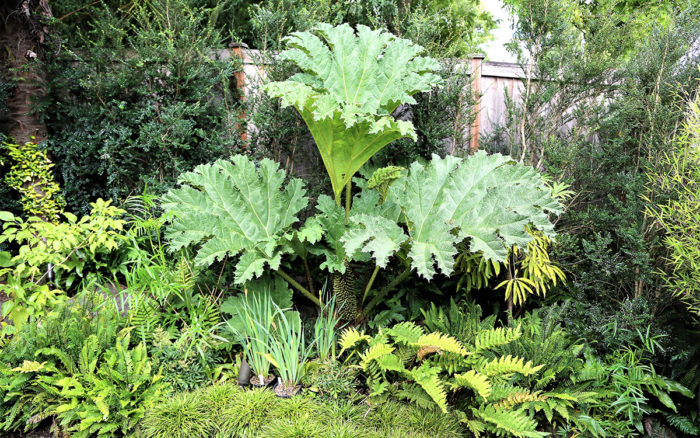
Imagine spending the day in a tropical paradise without having to travel anywhere! Late-season tropical gardens can create a striking look in the Pacific Northwest. By selecting the most appropriate plants for tropical planting schemes, you can create a lush oasis. Exciting, bold foliage and striking, hot-colored flowers make these gardens shine in late summer through early fall. Here are some plants that I like to incorporate in my tropical-themed garden designs for maximum impact in autumn.
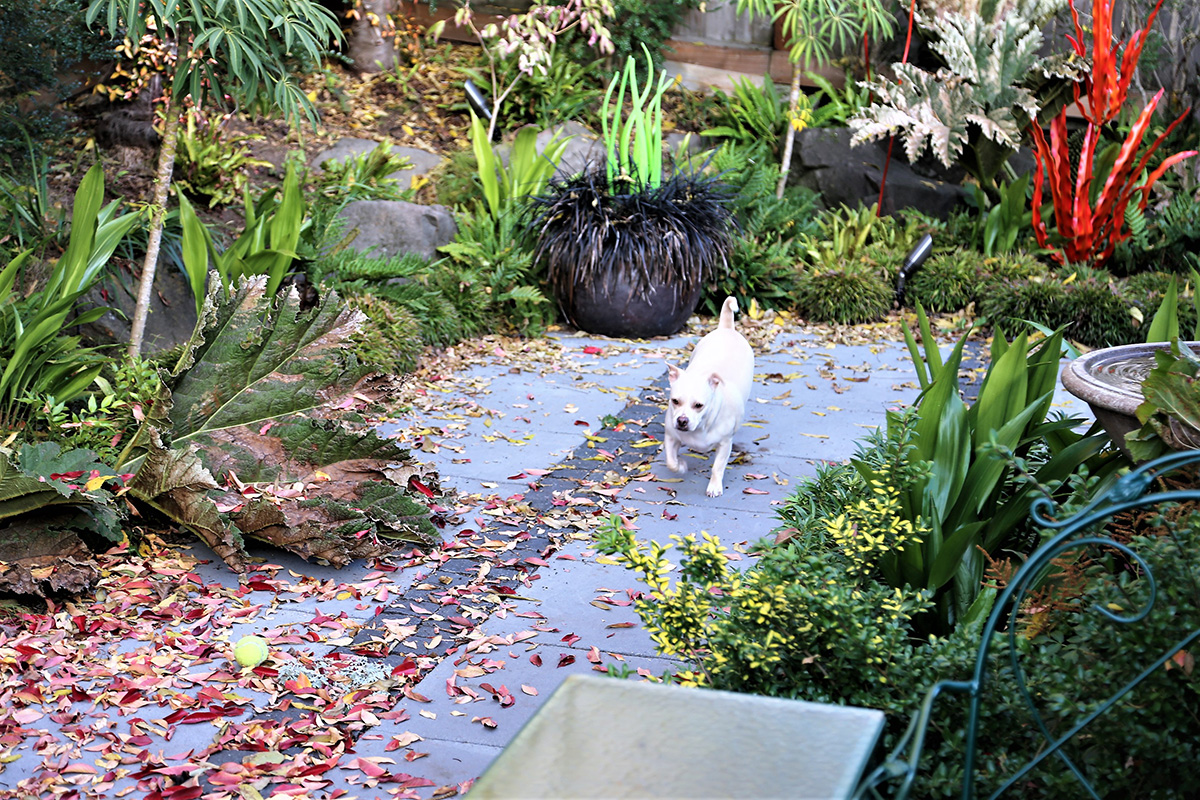
Gunnera is a bold focal point that demands space and attention
Gunnera (Gunnera manicata, Zones 7–10) is a spectacular garden plant, although it does take up space. This plant, native to Brazil, is often called “dinosaur food.” Its large, rigid leaves help create a spectacular centerpiece in any garden. If grown in the right conditions and setting, the leaves can grow to 4 feet in diameter. They look amazing with some night lighting to accentuate their size. Gunnera grows well in gardens with adequately moisture-retentive, rich soil all season long. It is a perennial that requires some winter protection, mostly to ensure the early spring growth is not damaged by extreme winter weather. While gunnera looks good all summer long, the leaves have a nice wabi-sabi look to them in autumn, as shown above. It looks great with ornamental grasses and other plants that hold their structure as the weather turns bad. The tough leaves can handle a lot of conditions until they finally collapse or are cut down. I cut off the large leaves in late fall and invert them over the crown for winter rain protection. Western sword fern fronds (Polystichum munitum, Zones 4–8) work for this purpose as well. You could also use very large empty nursery containers placed over the crowns for protection.
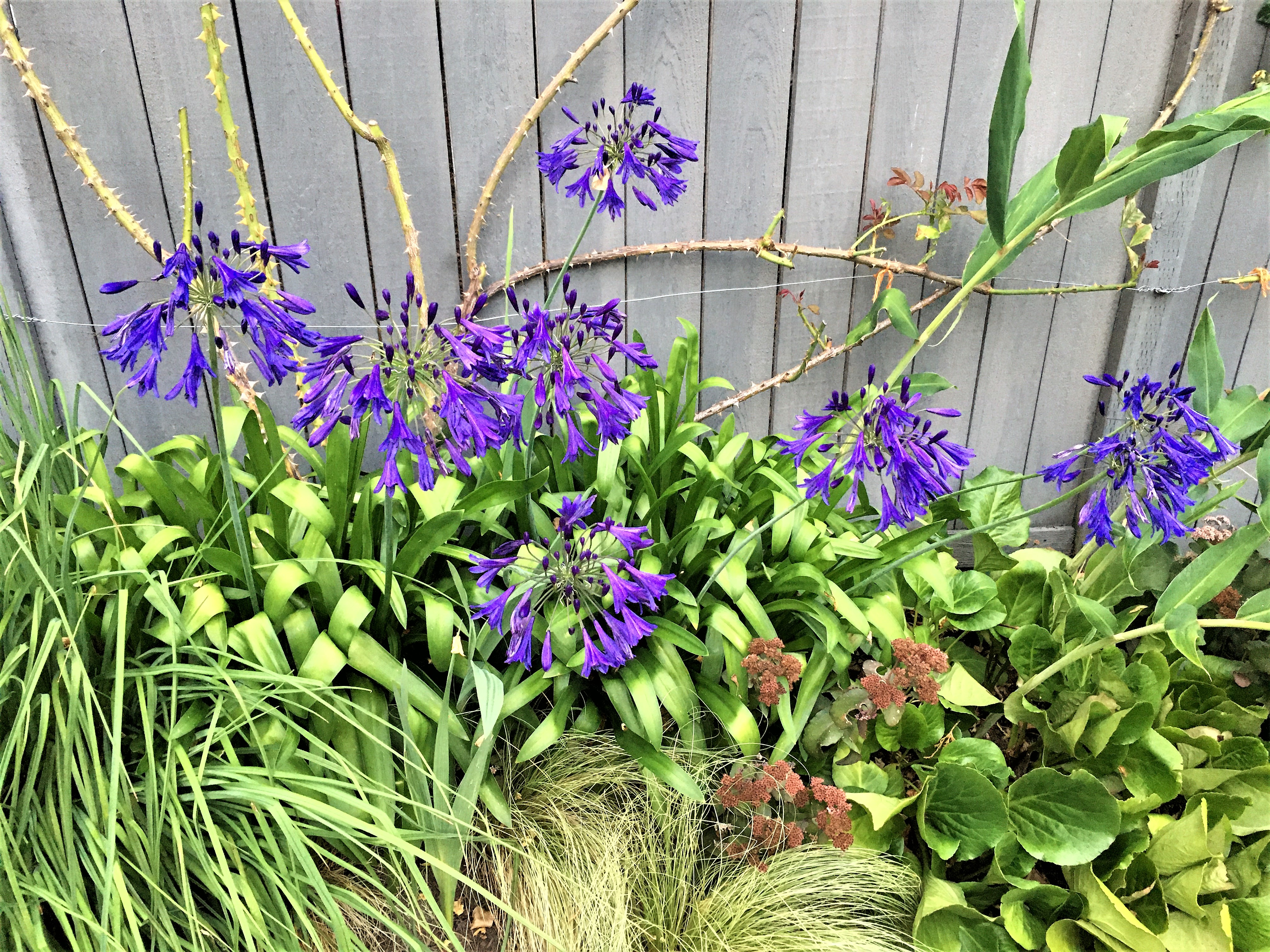
Agapanthus sports explosive, round blooms atop strappy foliage
Most Northwest gardeners I know are thoroughly enthralled with all the new and amazing sizes and colors of agapanthus, or lily of the Nile (Agapanthus spp. and cvs., Zones 7–10), which range from the deepest inky purples to blues to bright white. We are very lucky to have some excellent local nurseries that are growing and hybridizing agapanthus that are hardy here in the Pacific Northwest. They do take some time to get settled and bulk up in the garden, but I love their late summer and early fall blooms. The larger varieties bloom later in the season. Agapanthus, which are South African in origin, have large, flat strips of foliage that add great texture, and the new flower stalks that start to peak out in midsummer look like little birds in a nest. The dramatic tall flower stems are fireworks in the garden. They require full sun and rich soil. As a bonus, they are drought tolerant once established. This year I have added ‘Tall, Dark, & Handsome’ agapanthus from the venerable Dan Hinkley to my garden. It has very tall dark purple flowers reaching 3 feet in height. I cannot wait until they get settled and grow into large clumps. Additional agapanthus can be grown in containers that can move from the patio to the garden and back.
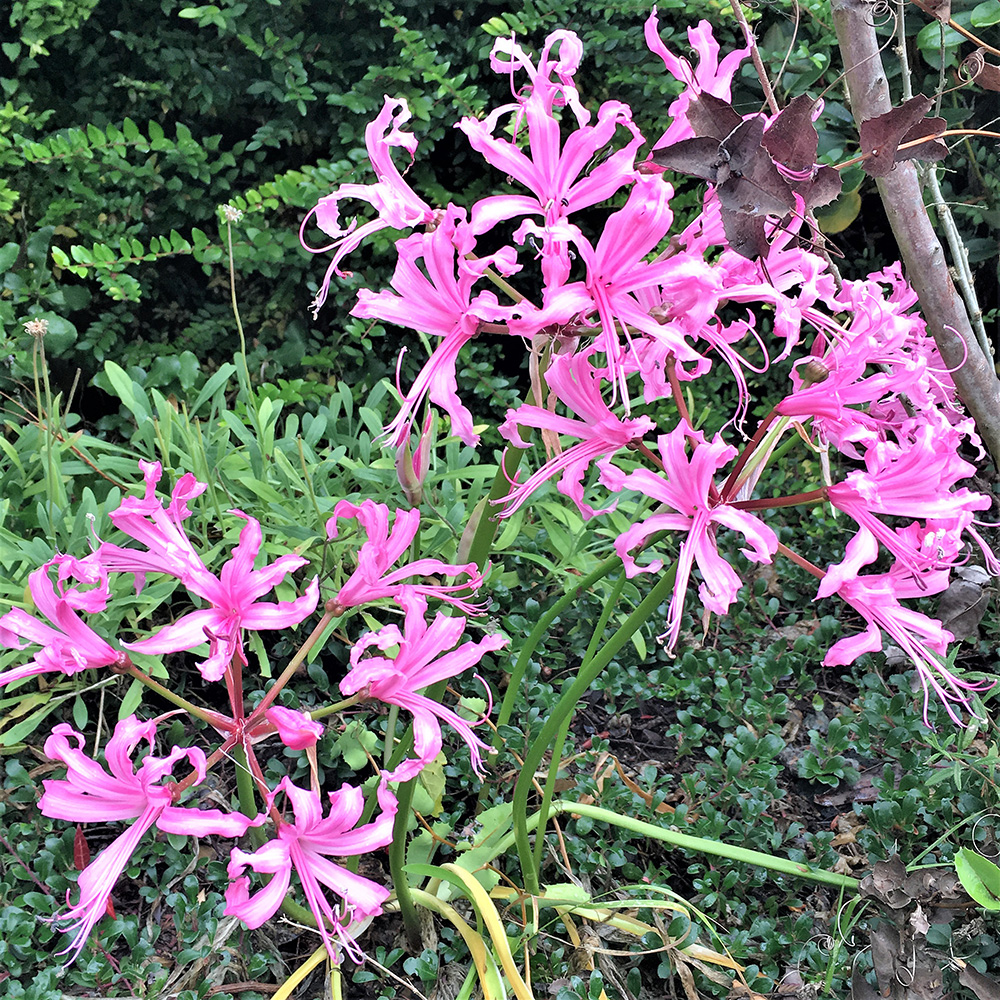
These South African bulbs add interest in spring and fall, taking a break in summer
Lastly, there are some amazing late-season South African bulbs that are frequently overlooked by gardeners. Nerines (Nerine spp. and cvs., Zones 8–11), amaryllis (Amaryllis spp. and cvs., Zones 7–10), and hybrids of the two—”amarines” are all excellent late-summer- and early-fall-blooming bulbs. These are wonderful choices for drier areas of the garden. They certainly surprise everyone when they start blooming. The rich colored flowers are a nice foil to the beginning of fall-colored leaves and foliage. They range from red to pink to white. The foliage comes up in the spring like other bulbs, but once the summer weather begins, the foliage dries up and disappears. Make sure you remember where you planted these bulbs, as I have mistakenly dug up a few clumps when I wanted to add new plants to my garden. When the weather starts to cool from the summer highs and the more frequent rain starts, these bulbs begin to bloom. They are also great for late-season floral bouquets if you are tempted to cut them from your garden. I have used ‘Mollie Cowie’ nerine (Nerine bowdenii ‘Mollie Cowie’, Zones 7–11), which has variegated green-and-white leaves in spring and vibrant pink flowers in fall.
I love beautiful tropical-looking gardens, and picking the appropriate plants to create that look is key. The few mentioned above can help you start creating this feeling in your Northwest garden in fall.
—Jason Jorgensen is a landscape designer in Seattle.
Fine Gardening Recommended Products

Nesco Snackmaster Express Food Dehydrator
Fine Gardening receives a commission for items purchased through links on this site, including Amazon Associates and other affiliate advertising programs.

VegTrug Classic Cold Frame
Fine Gardening receives a commission for items purchased through links on this site, including Amazon Associates and other affiliate advertising programs.

Gardener's Supply Company Summerweight Fabric Plant Cover
Fine Gardening receives a commission for items purchased through links on this site, including Amazon Associates and other affiliate advertising programs.




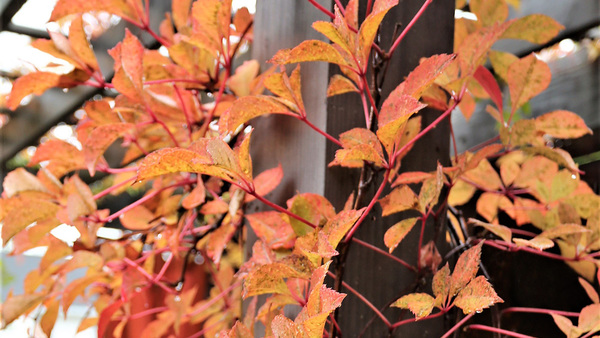














Comments
Log in or create an account to post a comment.
Sign up Log in